Robert G. Lamparter Postcard Collection, Montauk Library Archives
At 228 years of age, the Montauk Lighthouse is one very old lady, but she’s been photographed more times than any runway full of models. Heaven knows how many postcards have been graced with her image, and the Montauk Library has the good fortune of possessing hundreds of them, many of which have been digitized.
The lighthouse has stood as a symbol for all of Long Island as well as, at times, all of New York State. Robert G. Lamparter Postcard Collection, Montauk Library Archives
“Card received. Thanks for same. Can’t you send colored cards? Could you get any historic views? Mrs. Geo. E. Darling.” The Montauk Lighthouse circa 1907. Montauk Library Archives
According to a U.S. Postal Service blog, “postcarditis,” or “a craze for sending and collecting postcards,” swept the nation during the first two decades of the 20th century. This was partly because rural free delivery had been introduced in 1896, expanding the mail delivery network. It was also, according to Al Holden in his Montauk Almanac VIII, because a Philadelphia pencil salesman had invented the picture postcard as a way to promote his products.
 Travelers and tourists embraced postcards, most of which, like the one at top, were at first produced in Germany. The back of another postcard, below that, bears the rural free delivery initials (R.F.D.). Robert G. Lamparter Postcard Collection, Montauk Library Archives
Travelers and tourists embraced postcards, most of which, like the one at top, were at first produced in Germany. The back of another postcard, below that, bears the rural free delivery initials (R.F.D.). Robert G. Lamparter Postcard Collection, Montauk Library Archives
The lighthouse was a favorite subject for Robert G. Lamparter (1936-2013), an art and photography teacher who moved to Montauk full-time after retiring in 1996. His daughter, Keri, donated about 175 scans of postcards he had collected, many featuring the Montauk beacon. Spanning more than a century, these and other postcards illuminate the history and evolution not only of postcard production, but also of the lighthouse itself, which has so far survived decades of erosion thanks in large part to the Montauk Historical Society.
The postcard at top shows an extensive bluff protecting the lighthouse from the Atlantic. It was postmarked, below, in 1934. Robert G. Lamparter Postcard Collection, Montauk Library Archives
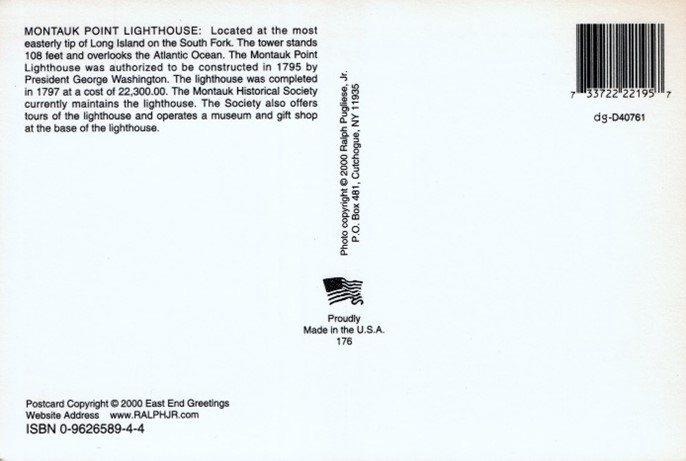 Erosion had chewed off a large portion of the bluff by the time this photograph was shot by Ralph Pugliese, Jr., a dedicated photographer of the lighthouse. The back of the postcard, right, notes a 2000 copyright date. Robert G. Lamparter Postcard Collection, Montauk Library Archives
Erosion had chewed off a large portion of the bluff by the time this photograph was shot by Ralph Pugliese, Jr., a dedicated photographer of the lighthouse. The back of the postcard, right, notes a 2000 copyright date. Robert G. Lamparter Postcard Collection, Montauk Library Archives
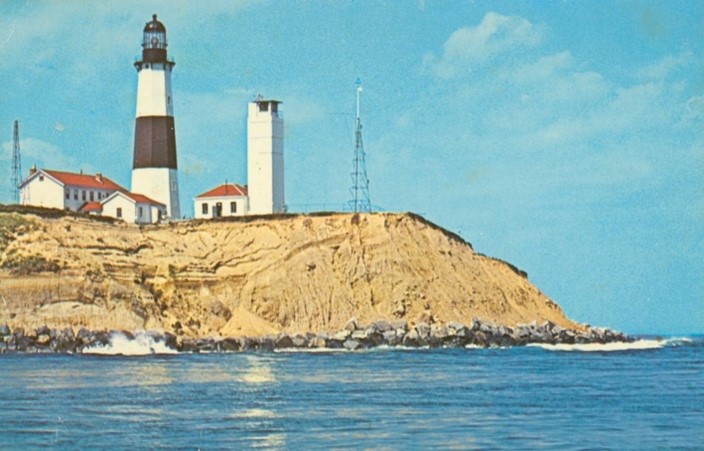 The postcard at top shows the lighthouse without a fire tower (below it) that was added during World War II. Montauk Library Archives
The postcard at top shows the lighthouse without a fire tower (below it) that was added during World War II. Montauk Library Archives
Milt Price took many postcard photos of the lighthouse, including the two above. The aerial photo was shot in the 1960s. Montauk Postcard Collection, Montauk Library Archives
A view from a different side of the light, from the 1950s. Robert G. Lamparter Postcard Collection, Montauk Library Archives
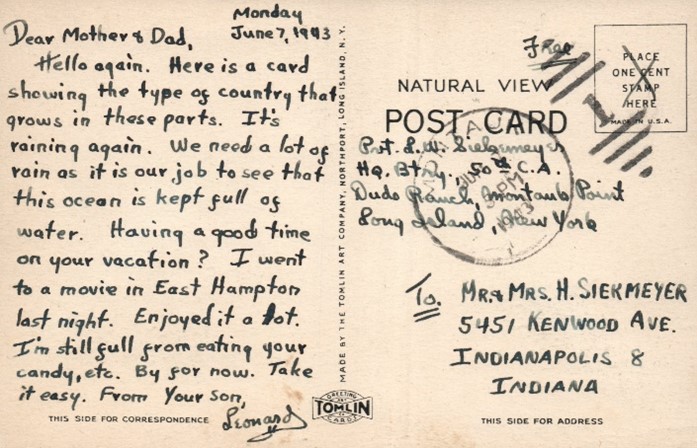 Perhaps the most interesting thing about this card, which was posted in 1943, is that the private lieutenant who sent it seems to have been stationed at the “dude ranch” at Deep Hollow when he wrote to his parents. According to Henry Osmers’s American Gibraltar, Army personnel camped in tents there from 1943 to 1944.
Perhaps the most interesting thing about this card, which was posted in 1943, is that the private lieutenant who sent it seems to have been stationed at the “dude ranch” at Deep Hollow when he wrote to his parents. According to Henry Osmers’s American Gibraltar, Army personnel camped in tents there from 1943 to 1944.
Rare is the traveler today who takes time to select a picture, compose a message, and mail a postcard; selfies and text messages usually suffice. Still, there are postcards for sale at Montauk souvenir stores and the lighthouse gift shop – and you can be sure that they include portraits of the historic landmark at the end of Montauk Point.

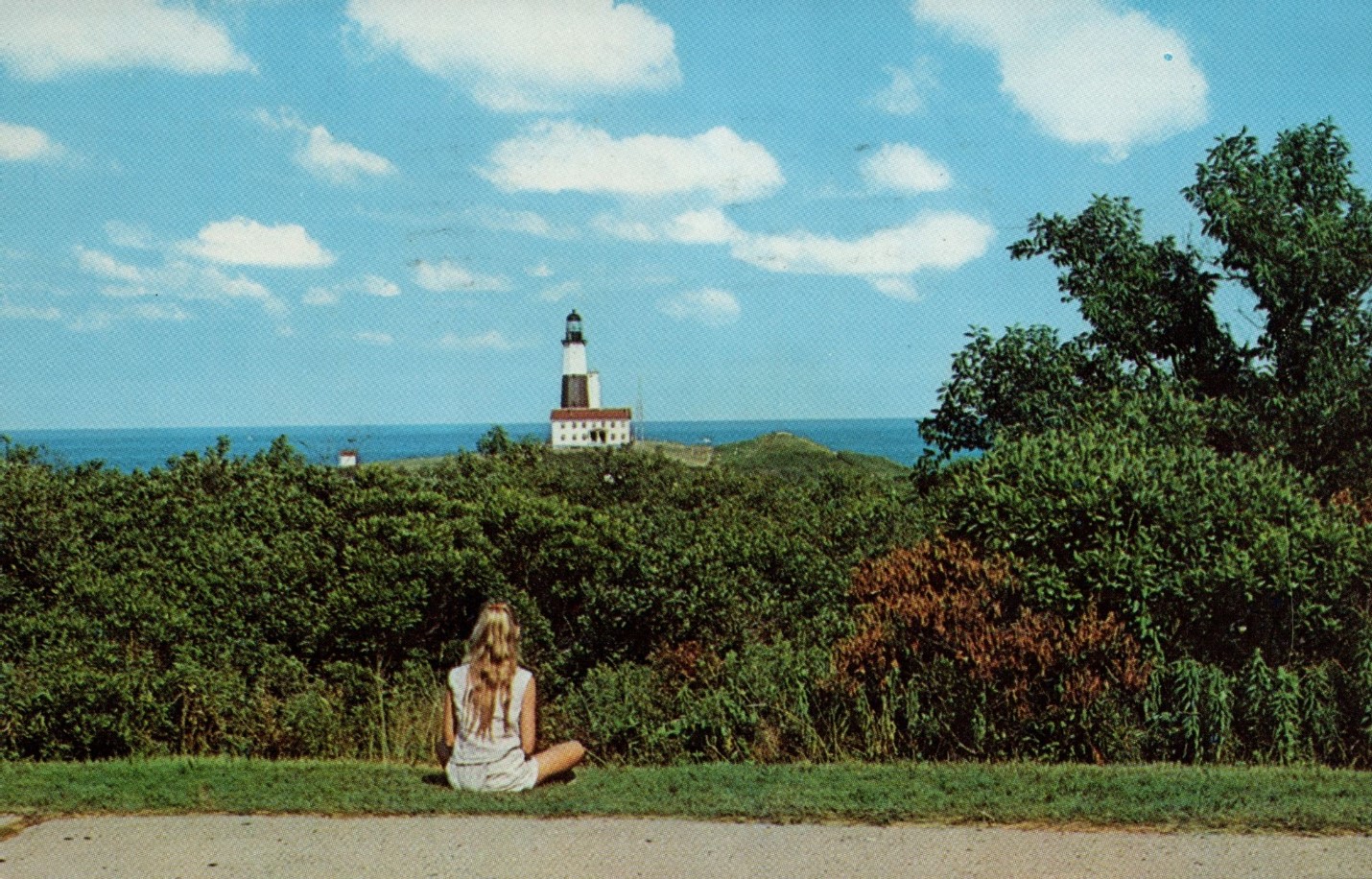
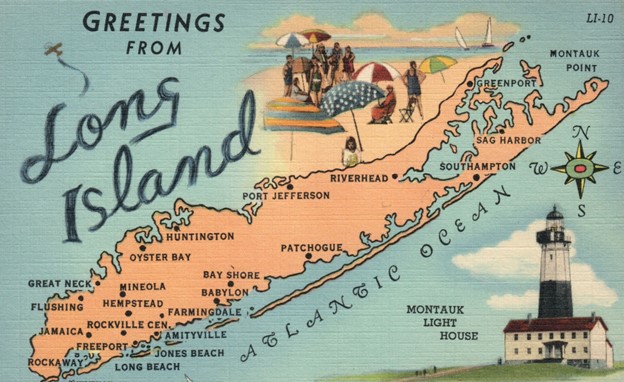


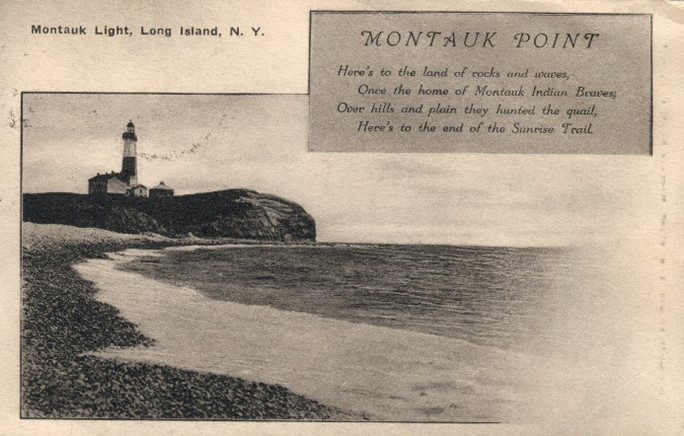
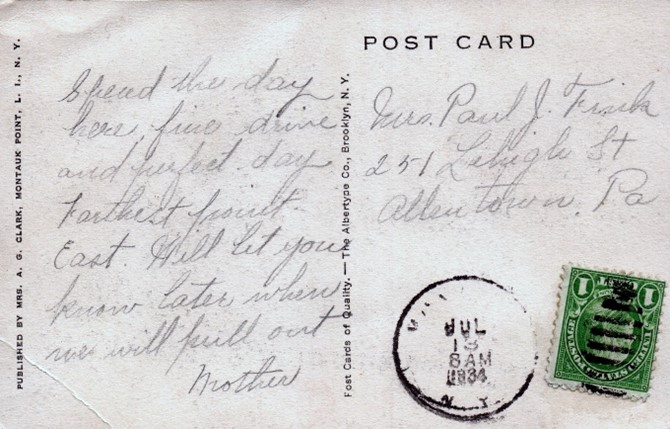
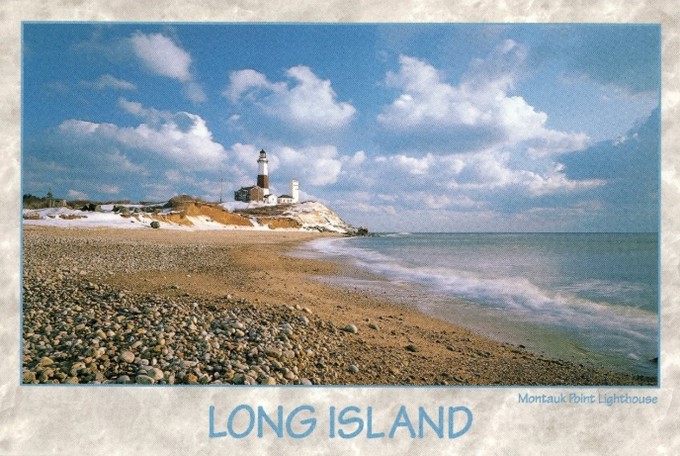
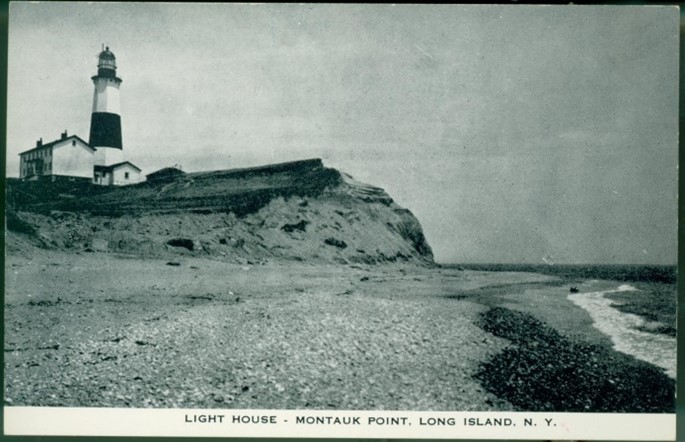
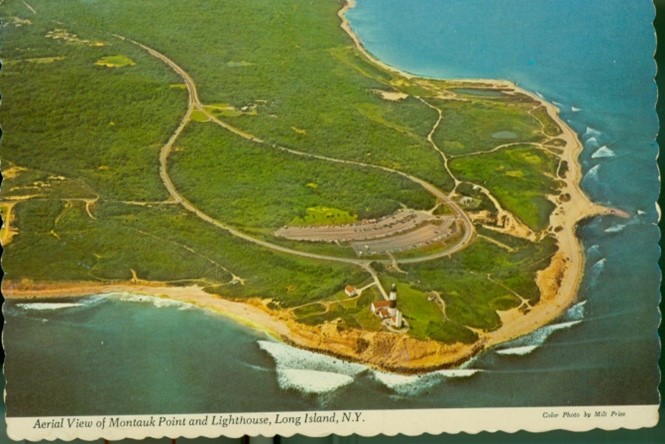
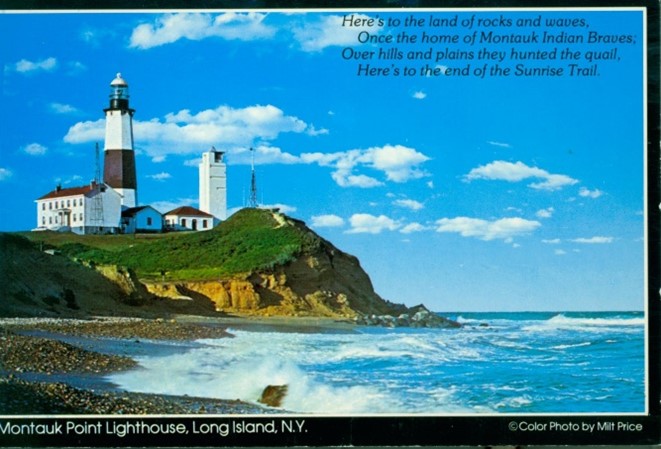

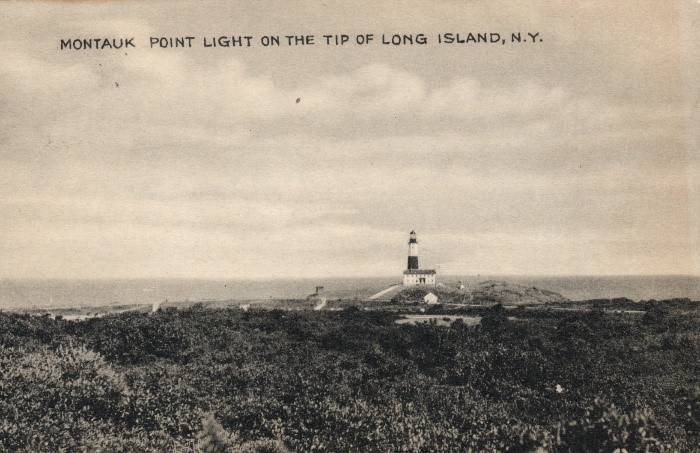
One Comment
Thank you for sharing your phenomenal postcards of our treasured Montauk Lighthouse. Excellent blog.